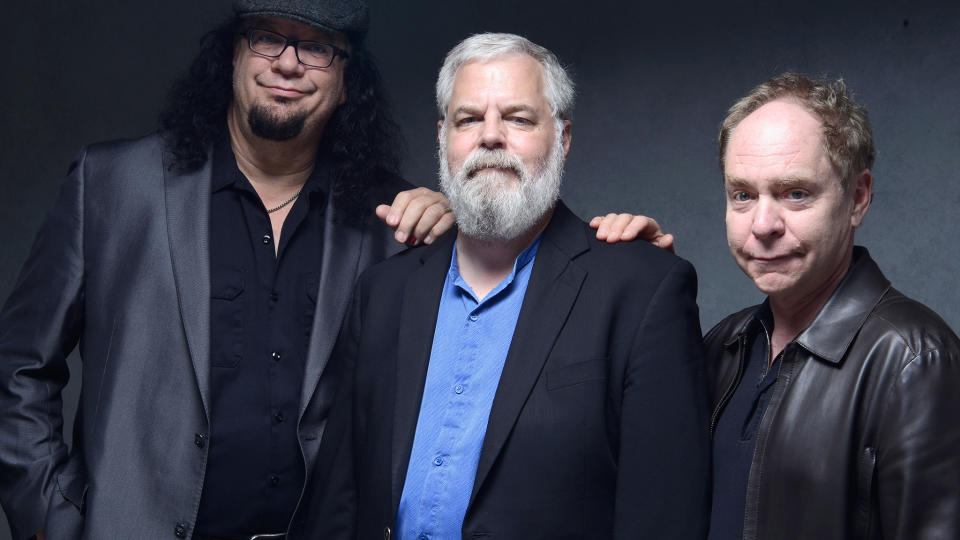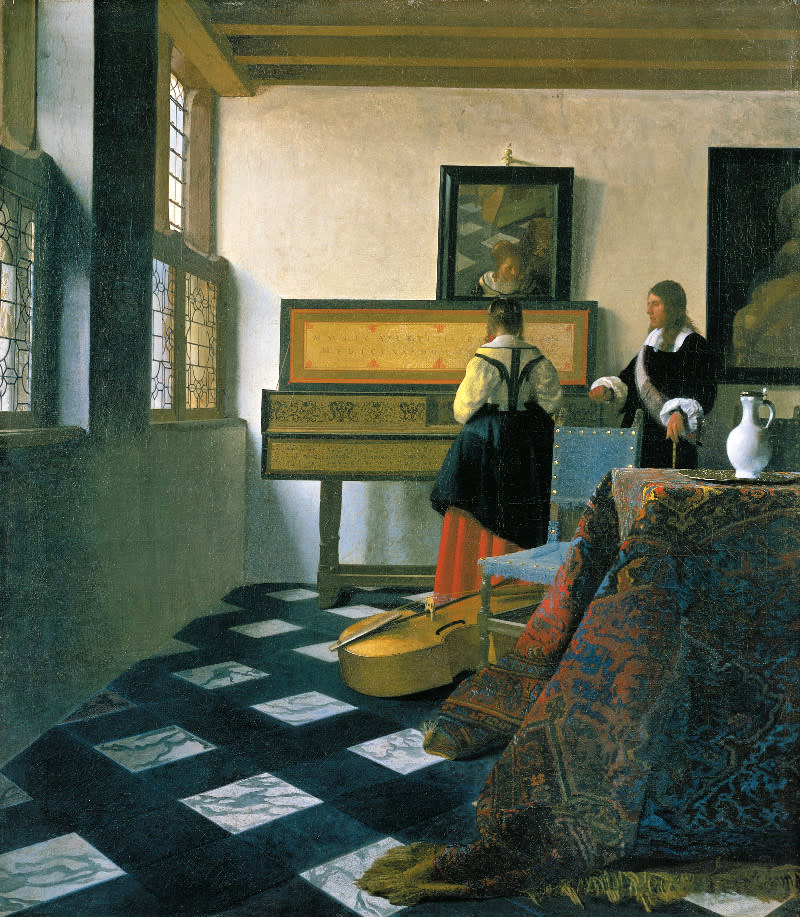‘Tim’s Vermeer’ Trailer: An Inventor, Two Magicians, and a 350-Year-Old Mystery
How's this for a trick? A middle-aged guy who has never picked up a paintbrush decides to replicate a masterpiece by one of the greatest artists in human history. To tell a story that unbelievable, you'd need a couple guys who have some experience with the impossible: magicians Penn & Teller.
Directed by Teller (his feature debut) and produced and narrated by Penn Jillette, the documentary "Tim's Vermeer" tells the true story of Tim Jenison, an inventor who created digital editing and computer animation tools that helped revolutionize the video industry. The film shows how Jenison turned his inquisitive mind and visual expertise to unravelling a mystery that has confounded art historians for nearly 350 years: How did Johannes Vermeer, the 17th century Dutch Master, create the most realistic paintings the world had ever seen.
Jenison's idea, based on a book by renown British artist David Hockney, was that Vermeer had to be using technological help to reproduce the level of detail and particularly the subtle shading of light that would otherwise be invisible to the human eye. With his own experience in video, Jenison knew the only way a person can visually match colors precisely is to have them right next to each other. And he came up with a simple but mind-blowing method for doing just that.
Jenison realized if you could place a small mirror above a canvas at a 45-degree angle your the subject, you could see both the object and the painted representation of it at the same time. By methodically blending the color until the edge of the mirror is no longer visible, Jenison could accurately recreate a photograph with paint, even though he had never painted before in his life. Jenison began to theorize that Vermeer could have used a similar process with the tools available to him in the 1600s do create his masterworks.
When Jenison explained his idea to his friend Penn Jillette over dinner, the magician instantly knew that it could be a movie. Teller, Jillette's stage partner for nearly 40 years, took on the role of directing the film, though like Jenison he had no prior experience. In a phone interview this week, Teller told Yahoo Movies (yes, when not on stage he does actually talk), that he felt a special connection to Jenison's story because both of his parents were artists. He said, "I've thought about and been around for a long time the question of 'How do you get the idea that's in your head onto the canvas?'"
Moreover, the 45-degree angle mirror is one of the most useful tools in magic for making an object look empty when it's really not. Teller said, "I immediately grasped what Tim was doing, because it's exactly in the middle of my world." So while it's often said that magic tricks are "all done with mirrors," Teller was fascinated that the same could be true of great art.
Teller said the documentary was originally going to be called "Vermeer's Edge," in reference to both the mirror he might have used and the advantage that could have given him over other painters. But as he and his crew spent months recording every step of Jenison's process in recreating one of Vermeer's most celebrated and complicated pieces, "The Music Lesson," Teller realized it was Jenison's passion that was the heart of the story.
To prove his theory, Jenison decided he needed to replicate every aspect of Vermeer's studio. So he built an exact copy of the room (even though he's not an architect), all the furniture (also not a carpenter), and the exact windows (not a glazier). He also had to cut and hand-polish the lenses he needed to project the image of the room and its contents so that he could paint it. He even got his daughter to spend part of her break from college sitting perfectly still for hours on end to model for the painting.
Teller said that the crew collected nearly 2,400 hours of footage documenting Jenison's process, which took up 100 terabytes of data. He and his editor spent a year cutting that down to a swift 80-minute-long feature. And it's his belief that looking at a great artist like Vermeer as person who used tools and ingenuity rather than some sort of inexplicable, innate gift makes the work all that more impressive. Teller said, "I always think that an amazing human being is more interesting than a god. The people who use the word 'genius' as a synonym for 'supernatural'… are saying Vermeer's eyes could do things that human eyes can't do. I like they idea very much that we're turning Vermeer from a supernatural being into someone who was a fabulous artists but a real human being."
"Tim's Vermeer" is one of 15 films on the shortlist for the Academy Award for Best Feature Documentary. The film opens in New York and Los Angeles on January 31.
Watch Tim Jenison's process in a clip from 'Tim's Vermeer':

 Yahoo Movies
Yahoo Movies 


